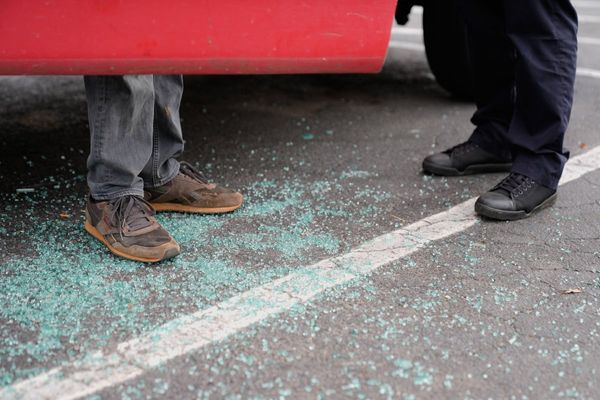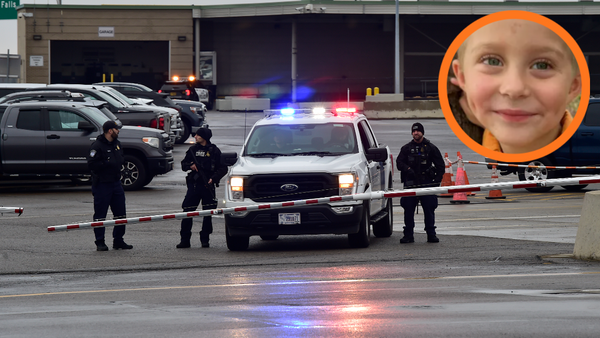
Medieval tombs linked to the Holy Grail crusaders have been uncovered in a Staffordshire churchyard
Ancient graves lying forgotten in a Staffordshire churchyard could belong to eight Knights Templar from the 12th century.
Historian Edward Spencer Dyas said he made the “Da Vinci Code-style revelation” after finding medieval tombs at St Mary’s Church in the village of Enville, west of Birmingham, said the Daily Mail.
Dyas discovered three graves in 2021 and believed them to belong to the ancient holy order, the Knights Templar. After more investigation, he has now found five more.
- SEE MORE Dublin church appeals for return of medieval crusader’s head
- SEE MORE Medieval warhorses ‘no bigger than modern ponies’
The additional graves were uncovered after studying historical surveys of Staffordshire and Enville drawn by the prominent 19th-century architect John Chessell Buckler. “We are fortunate Buckler came to make these drawings. Without his efforts these Templar graves found inside Enville church would have been lost to us,” Dyas told The Telegraph.
The discovery means that the 12th-century church could be “one of the most nationally important churches in the country”, he added.
Who were the Knights Templar?
The Knights Templar were a powerful military organisation of devout Christians in the medieval era. Formed around 1119, the order was tasked with ensuring the safety of pilgrims on their way to Jerusalem, but would take on greater military roles throughout the Crusades of the 12th and 13th centuries.
Their prominence and wealth would eventually provoke opposition from rival orders. “Falsely accused of blasphemy and blamed for Crusader failures in the Holy Land, the order was destroyed by King Philip IV of France” in 1307, said Britannica.
“The Templars live on in popular culture – from the video game ‘Assassin’s Creed’ to Dan Brown’s ‘The Da Vinci Code’,” said The Washington Post. But author Dan Jones told the paper there is “no credence to the conspiratorial fantasies that have been spun around the Templars over the years. No, they do not guard the Ark of the Covenant or the Holy Grail, and never did. No, a surviving remnant does not protect the identities of the descendants of Jesus and Mary Magdelene. No, the order does not secretly run the world.”
What do we know about the graves?
The reason there are so many Templar graves in a Staffordshire church remains a mystery – although members of the order were believed to have attached themselves to churches dedicated to the Virgin Mary.
Dyas believes the graves may belong to members of the Knights Templar because of distinctive symbols found on the headstones – a “Templar cross within double circles”, which is a “standard Templar design”, said the Mail.
One grave bears a “Crusader cross”, potentially indicating that the knight was part of both the Templar Order and the ancient Crusaders. At the foot of the same grave there also lies a Templar cross – a variation of the Jerusalem Cross – hinting that this knight might have been associated with the Templar Order at the Temple Mount in Jerusalem.
Dyas’s research suggests that St Mary’s Church was built by Roger de Bermingham, a priest whose family owned lane around Enville, including the nearby Morfe royal forest.
“Henry de Morfe, who held land owned by the de Berminghams, sold part of Morfe Forest to the Templars at this time, and the de Berminghams instated Roger de Bermingham as the first priest of St Mary’s Church, Enville,” said Dyas in Stourbridge News.
The church, Dyas believes, was therefore “under the patronage of the Templars”.
But not all experts are convinced that the graves can be linked to the Knights Templar. Helen Nicholson, emerita professor of medieval history at Cardiff University, said: “A cross alone is not enough to show that a tomb was connected to the Templars.”
She went on: “The Templars did not use a distinctive cross – their crosses had four arms the same length, but otherwise varied,” she said. She added that there was no record of Templars owning property in Enville.
Professor Ken Dark, an archaeologist and historian at King’s College London, also told the Mail: “The meaning of the symbolism, association with the Templars, and even dating of these tombstones, all seem doubtful.”







